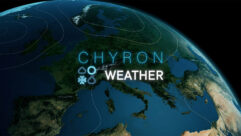
Inscriber InfoCaster 2.0
Apr 1, 2006 12:00 PM,
By Jeff Sauer
Powerful digital signage software handles many tasks.
Imagine the concourse of a sports arena or megaplex theater lobby with food counters, arcade attractions, and souvenir stands. Today, dynamically changing digital signage offers promoters a lot more possibilities than the static billboard ads and scrolling LED signs of years past. Digital signage can display schedules and ticket information for upcoming events, targeted merchandizing offers, and specific promotions based on food count, as well as idle entertainment for waiting crowds. Of course, before the crowds see any of it, all of that content needs to be assembled and distributed to each of the displays in the public areas.
Inscriber’s InfoCaster 2.0 is a software-based system that leverages three separate software modules to scale from very small installations of no more than one or two digital signs to installations at large, complex facilities like airports and sports arenas.
The InfoCaster Creation Station ($2,750) can act as design center, scheduler, and player for those smaller installations. For larger installations, however, the Creation Station feeds the scheduled content to the Network Manager ($2,500 for up to 150 players, and prices up to $5,000 for unlimited players), which distributes content over a network to computers running the InfoCaster Player ($1,100 for one, with licensing discounts for volume use). Together, the three modules create a digital signage system that can control multiple signs around a single facility or in multiple facilities in different locations.
LAYOUT DESIGN AND SCHEDULING
The InfoCaster Creation Station takes a smartly hierarchical approach to assembling content. Full-screen layouts are called Pages, and Pages can be grouped in a schedule playlist, or Sequence. You can also divide those Pages into an unlimited number of Regions positioned anywhere on the screen. Each of those Regions can have its own Sequence of scheduled content.
A new Page is a blank canvas set to whatever screen resolution you choose. A series of buttons on the left side of the Page layout window allows you to insert Regions for video, stills, text rolls and crawls, animation, time clocks, and sound. Any Region can then be dragged and dropped to a specific location on the screen, repositioned, and resized. This includes the option to layer Regions on top of each other with differing levels of opacity to accommodate, for example, a “bug” or semi-transparent logo in a bottom corner.
You can drill down into any inserted content, too, by opening “Quick Editor.” Quick Editors vary depending on what file type you’re working with. They offer appropriate control parameters; for example, you can do minor trimming to video and animation, quickly change the font or the speed of a text crawl, etc.
Adding assets to Sequences is as simple as dragging them into a Sequence list. You can set the length of time each asset stays on screen individually or set them all globally. The Sequence editor also lets you add transitions between assets individually or globally.
Each Region has its own Sequence, so you might think there could be no interaction between Regions. Actually, InfoCaster can assign Triggers to any element in any Sequence. By using Triggers, you can, for example, set a specific graphic, or Sequence of graphics, to appear in one Region when a specific video clip starts or stops in another. Or you can make full Regions change position, appear, or disappear, etc. It’s a wonderful level of control that quickly affords great visual possibilities.
Of course, it can make projects fairly complicated and, at the moment, InfoCaster has only a limited file tree overview that can’t possibly show how Sequences are linked to one another. Fortunately, Inscriber plans to show a new Storyboard project overview at NAB in April.
EXPERIENCE PAYS
There’s no way to cover all of the features in InfoCaster here, but those details are easy enough to come by at www.inscriber.com. What’s more important is how InfoCaster puts the features together. That’s where Inscriber’s (and parent company Leitch’s) experience pays off — its years of creating tools for video editing, broadcast television graphics creation and insertion, and image processing. The name Inscriber comes from one of early software title and character generators that used to be bundled with nonlinear editing systems. Back 10 or 12 years ago, that Inscriber used to be powerful and professional, but awkward to use.
Today, that old Inscriber now exists as a much more mature and extremely deep title and animated character tool, TitleMotion, which is included with InfoCaster. The assets for digital signage typically come from dedicated video editors, professional animation tools, and compositing applications like Adobe After Effects. However, with hundreds of styles, colors, shadows, textures, etc., TitleMotion has enough capabilities to allow InfoCaster users to quickly generate very elegant text-based messaging without needing to go to a designer.
Still, InfoCaster’s many features never bury its interface. It follows conventions and puts features where you’d expect to look for them, especially if you’ve worked with other visual creation tools in the past. And there’s an attention that comes only from having worked with visual files before. For example, you can scale video to fit a region or show only a corner of a clip. You can set Audio Ducking and lower the volume off background audio if a video clip has audio. You can even edit the digital clock tool for size, style, fonts, font, and background color, time clock vs. countdown, etc. InfoCaster supports conditional parameters and if-then logic, so individual design elements can appear, for example, in different colors if a parameter changes.
InfoCaster gets even more power by linking to external content. For example, video regions can play stored files and also live streaming files simply by linking to a URL. The same is true for crawling text tickers using XML/RSS ticker feeds. All Regions can also draw elements or textual information from a database, thereby allowing a static page to continually update schedules, flight information, weather forecasts, etc.
Scheduling is done by the calendar, so Sequences can literally be scheduled to play months in advance. The InfoCaster Network Manager further allows you to build multiple Sequences to play on all screens at once or independently on different displays. Everything that is played by the Network Manager is logged. That log file can be sorted and queried to generate reports for individual displays and for individual assets, allowing a facility to submit a custom report to each company that paid for advertising. The Network Manager can even send an email or page in case of trouble.
The price of the InfoCaster Creation Station may seem high, but there’s plenty of value at $2,750 for anyone who’s serious about digital signage. Even the Network Manager, at $2,500-$5,000, is a small part of an installation budget. However, at $1,100, the software player is likely to cost more than the computer on which it’s running. Probably due to market pressure, Inscriber recently introduced two more affordable Player versions: an LE Player ($250) that supports only fullscreen video and graphics and an SE version ($750) that supports the multi-zone graphics and animation, but only fullscreen video and only a subset of InfoCaster’s features.
Ultimately, all of InfoCaster’s pricing reflects a maturing market. Still it’s a market that appears ready to take off as the costs of flat-panel displays and network infrastructures make the technology both viable and practicable. And Inscriber’s InfoCaster can make them all work together.
PRODUCT SUMMARY
Company: Inscriber
www.inscriber.com
Product: InfoCaster 2.0
Pros: Logical, hierarchical approach to assembling content, the included TitleMotion facilitates creation of professional-looking messages.
Cons: Player licenses can be pricey.
Price: $2,750 for Creation Station; extra for Network Manager and Players
SPECIFICATIONS
Aspect Ratios: 4:3, 16:9, 14:9, 1:1
Video Formats: MPEG-1, MPEG-2, MPEG-4, AVI, Flash, QuickTime, and Windows Media
Live Video Input: DV or composite playback
Streaming Video Input: ASX streaming or standard web streaming via IP address
External Data Sources: Text file, database, RSS, XML, or ODBC-compatible text feed
Video Output: Progressive-scan (VGA) output up to 1280×768, S-Video, and composite NTSC/PAL (with supported third-party dual-head VGA card); SDI output/input (with optional Inscriber Inca PCI-100 hardware)
System Requirements: Windows XP Professional; 2.8MHz P4 or better; 512MB RAM; dedicated hard drive for video clips; third-party dual-head video card for output.










